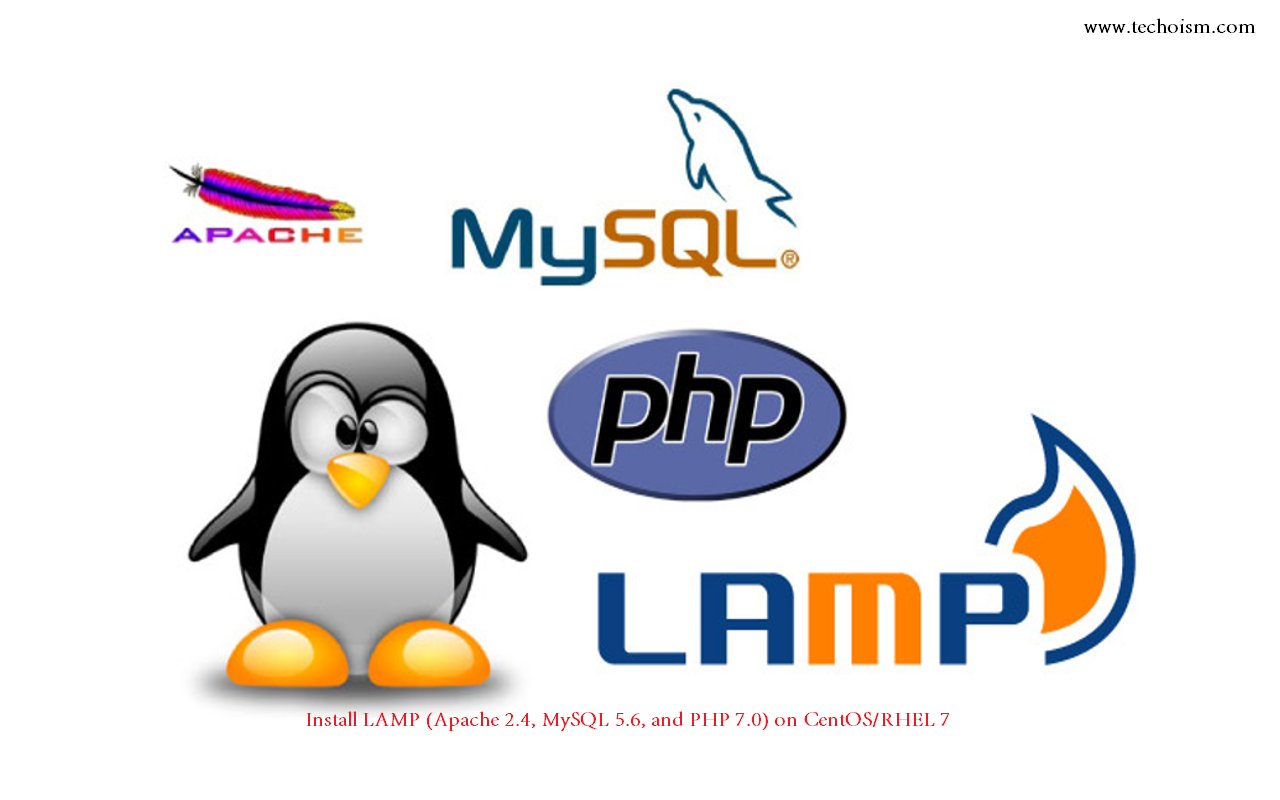Install LAMP (Apache 2.4, MySQL 5.6, and PHP 7.0) on CentOS/RHEL 7
LAMP stands for Linux, Apache, MySQL and PHP. Few days ago PHP version 7.0 has been released. Which has many number of changes and improvements than over version 5.X. This tutorial shows how you can install an Apache2 webserver on a CentOS 7.0 server with PHP7 and MySQL support. LAMP is short for Linux, Apache, MySQL, PHP.
See Also:
Apache Server
Apache (HTTPD) is the most popular web server used on Linux systems. Lets follow following steps of install Apache Server:
Add Yum Repository:
First install yum repositories in your system using following command:
# rpm -Uvh http://dl.fedoraproject.org/pub/epel/7/x86_64/e/epel-release-7-6.noarch.rpm # rpm -Uvh http://rpms.famillecollet.com/enterprise/remi-release-7.rpm
Install Apache Server
After adding remi repository install apache using following command:
# yum --enablerepo=remi install httpd
Start Apache Service
Now start httpd service and enable to start on boot using below commands.
# systemctl start httpd.service # systemctl enable httpd.service
Verify Version
Run the following command verify the version:
# httpd -v
Server version: Apache/2.4.6 (CentOS) Server built: Jan 12 2015 13:22:31
MySQL
MySQL is an open source relational database management system (RDBMS) based on Structured Query Language (SQL).
Add Yum Repository:
First add MySQL yum repositories in your system using following command:
# rpm -Uvh http://repo.mysql.com/mysql-community-release-el7-5.noarch.rpm
Install MySQL:
Now install MySQL server and other dependency packages.
# yum install mysql-server
Start MySQL Service
Now start MySQL service and enable to start on boot using below commands.
# systemctl start mysqld.service # systemctl enable mysqld.service
Set Root Password
Apply security on mysql and also set root user password.
# mysql_secure_installation
Verify Version
Run the following command verify the version:
# mysql -v
mysql Ver 14.14 Distrib 5.6.28, for Linux (x86_64) using EditLine wrapper
PHP
The PHP development team announces the immediate availability of PHP 7.0. Several bugs have been fixed. PHP 7.0.0 comes with a new version of the Zend Engine, numerous improvements and new features.
Add Yum Repository:
First add yum repositories in your system using following command:
# rpm -Uvh https://mirror.webtatic.com/yum/el7/webtatic-release.rpm
Install PHP7:
Now install PHP 7 from webtatic repository using following command:
# yum install php70w
Now install required php modules. Use following command to list available modules and install it.
# yum search php70w
Now run the following command to install all required modules:
# yum install php70w-common php70w-xml php70w-soap php70w-xmlrpc php70w-mysql # yum install php70w-mbstring php70w-gd php70w-mcrypt
Restart Apache Service
After installing php and other php modules restart Apache service.
# systemctl restart httpd.service
Verify Version
Run the following command verify the version:
# php -v
PHP 7.0.0 (cli) (built: Dec 2 2015 20:42:32) ( NTS ) Copyright (c) 1997-2015 The PHP Group Zend Engine v3.0.0, Copyright (c) 1998-2015 Zend Technologies
Open Port in Firewall
Now open ports for http (80) and https (443) services using following command.
# firewall-cmd --permanent --zone=public --add-service=http # firewall-cmd --permanent --zone=public --add-service=https # firewall-cmd --reload
Enjoy it!

